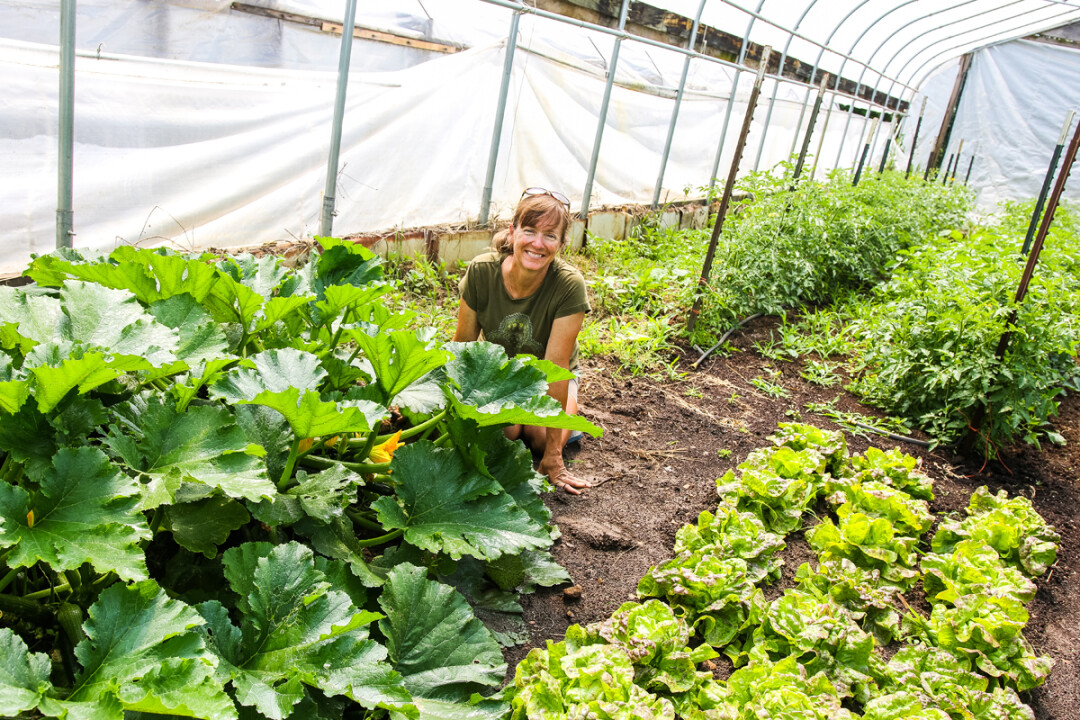Stay Green While Planting Greens
Sunbow Farm owner offers tips on farming sustainably
Jennifer Janiak, photos by Andrea Paulseth

If you were playing Family Feud and Steve Harvey asked, “Name something you think of when you hear the phrase ‘sustainable farming?’ ” what would the top five answers on the board be? They would likely be Organic, Environmentally Friendly, Green, Food, and Chemical-Free.
Although those terms may be true, they are just the tip of the iceberg when describing sustainable farming. You can farm organically by using non-GMO seeds and avoiding the use of chemicals, but that doesn’t necessarily mean that you are practicing sustainable farming. So, what does sustainable farming look like?

According to Kristina Beuning, owner and operator of Sunbow Farms outside Eau Claire, focusing on sustainability means making decisions to invest heavily in the soil. Her soil methodology includes testing the soil, adding nutrients, composting, and avoiding tilling. Sustainable farmers also focus on water conservation and air quality. Essentially, farming sustainably means putting practices in place that protect natural resources. Protecting those resources enables plants to thrive and produce a higher yield.
For backyard gardeners, Beuning has several tips to help you adopt sustainable practices.
Don’t till! Tilling destroys the natural mycorrhizal fungi that exist in soil, which enable plants to gain more nutrients. Tilling also kills earthworms that help break down organic matter. Lastly, tilling releases carbon from the soil, which increases greenhouse gases.

Test your soil and add nutrients. Beuning shared the importance of building the soil with the goal in mind to produce the most nutritious food out of the smallest space possible. She asks, “Would you rather grow five tomato plants that produce 10 tomatoes each or one tomato plant that produces 50 tomatoes?” If you invest in your soil, you can achieve the latter.
Would you rather grow five tomato plants that produce 10 tomatoes each or one tomato plant that produces 50 tomatoes? –Kristina Beuning, owner of Sunbow Farm
To avoid killing all the natural soil biology, don’t use chemicals. In addition, think about collecting rainwater and watering your plants with it.
Lastly, use compost. Compost doesn’t have to be complicated or expensive. Balance brown and green compost by starting with two to three inches of brown (small sticks and leaves), followed by one inch of green (grass clippings, weeds), and then sprinkle soil on top. Make sure it gets plenty of sun and water, and then simply let it decompose. Adding compost as organic matter to your soil will also improve the health of your soil.
Many farmers are making the shift to adopt sustainable practices. As a scientist, educator, doctor of plant ecology, and farmer, Beuning encourages all of us to follow suit because it benefits our own health as well as the health of our environment.
More information about Sunbow Farm can be found at their website at sunbowfarm.com.


